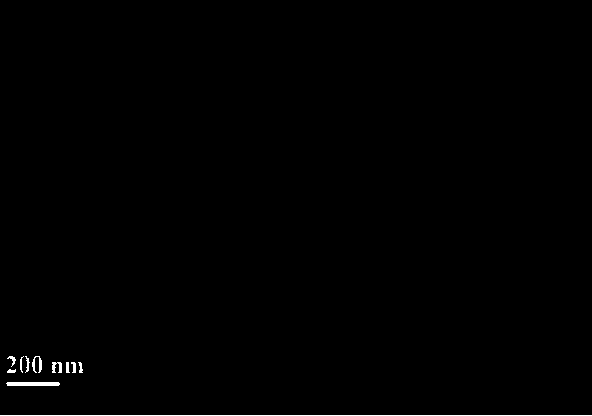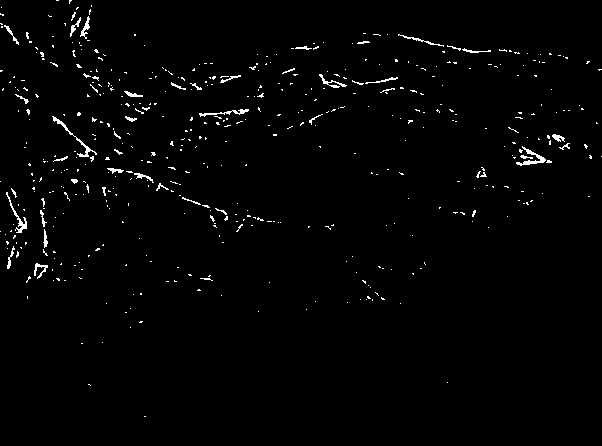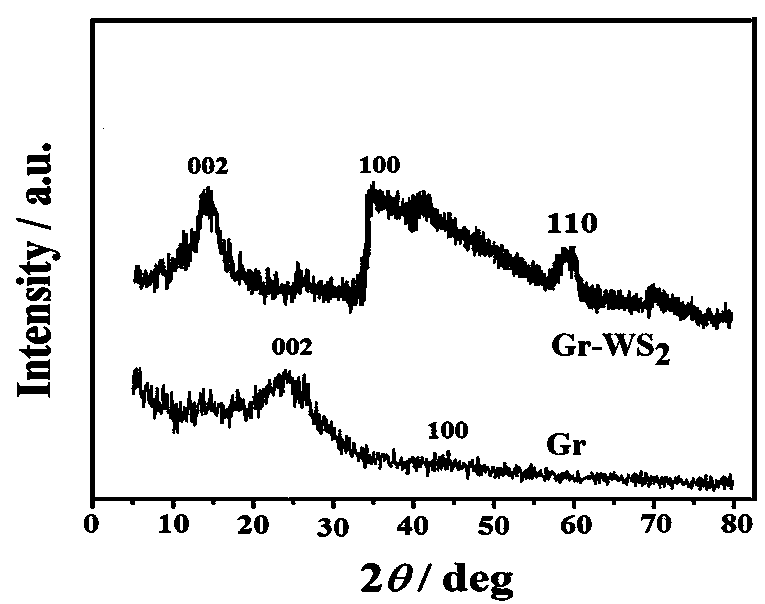DNA (Deoxyribonucleic Acid) electrochemical biosensor and preparation method thereof
A biosensor, electrochemical technology, applied in the direction of electrochemical variables of materials, can solve the problems of high chemical stability, poor water solubility, difficult research and application of graphene, etc., to achieve the effect of good selectivity, low cost and high sensitivity
- Summary
- Abstract
- Description
- Claims
- Application Information
AI Technical Summary
Problems solved by technology
Method used
Image
Examples
preparation example Construction
[0029] The preparation method of described DNA electrochemical biosensor is:
[0030] (1) Gr-WS modified on the glassy carbon substrate of the biosensor 2 / Chitosan (CS) film;
[0031] First, the glassy carbon substrate was pretreated, and then 8 μL of Gr-WS 2 The / CS mixture was drop-coated on the glassy carbon substrate and dried in the air;
[0032] (2) DNA immobilization and hybridization:
[0033] Gr-WS 2 / CS film-modified glassy carbon substrate was soaked in gold colloid for 12 h, rinsed with water and dried, then soaked in DNA probe (ssDNA) solution at room temperature for 10 h, rinsed with buffer solution, soaked in mercaptoethanol Blocked in the solution for 2 h; take it out and rinse it with buffer solution. Then react the sensor with the target DNA at 30 °C for 50 min, wash with buffer solution, and dry to complete the immobilization and hybridization of DNA;
[0034] Gr-WS in the step (1) 2 The preparation method of / CS mixed solution is: 1 mg of Gr-WS 2 ...
Embodiment 1
[0038] Example 1: Preparation of DNA Electrochemical Biosensor
[0039] (1) Gr-WS modified on the glassy carbon substrate of the biosensor 2 / CS film
[0040] First, add CS to 1% (v%) acetic acid solution and stir for 1 h to prepare 1 mg / mL CS acetic acid solution. 1 mg of Gr-WS 2 The composite material was ultrasonically dispersed in 1 mL of double-distilled water for 30 min, and then 1 mL of the above-mentioned CS acetic acid solution was added and ultrasonically dispersed for 1 h to obtain Gr-WS 2 / CS mixture. The glassy carbon substrate was polished with polishing powder, then ultrasonically cleaned with ethanol and double distilled water, and dried in the air. Add 8 μL of the above Gr-WS 2 The / CS mixture was drop-coated on a glassy carbon substrate and air-dried.
[0041] (2) DNA immobilization and hybridization
[0042] Gr-WS 2 / CS film-modified glassy carbon substrate was soaked in gold colloid for 12 h, rinsed with water and dried, and then soaked in 1.0 × 10 ...
Embodiment 2
[0048] Such as Figure 5 As shown, the above-mentioned DNA electrochemical biosensor prepared by the present invention is used to measure different concentrations of target DNA. Determination conditions: The determination medium is 5.0 × 10 containing 0.1 mol / L KCl -3 mol / L of [Fe(CN) 6 ] 3? / 4? Solution; using differential pulse voltammetry (DPV), the measurement parameters are: pulse amplitude 0.05 V, pulse period 0.5 s, potential scanning range: -0.1~0.8 V. exist Figure 5 , the logarithm of the current intensity and the target DNA concentration is 1.0×10 -14 ~ 5.0×10 -10 Good linear relationship in the range of mol / L, the detection limit is 2.3 × 10 -15 mol / L. It shows that the biosensor can be used for sensitive detection of DNA sequence.
PUM
 Login to View More
Login to View More Abstract
Description
Claims
Application Information
 Login to View More
Login to View More - R&D
- Intellectual Property
- Life Sciences
- Materials
- Tech Scout
- Unparalleled Data Quality
- Higher Quality Content
- 60% Fewer Hallucinations
Browse by: Latest US Patents, China's latest patents, Technical Efficacy Thesaurus, Application Domain, Technology Topic, Popular Technical Reports.
© 2025 PatSnap. All rights reserved.Legal|Privacy policy|Modern Slavery Act Transparency Statement|Sitemap|About US| Contact US: help@patsnap.com



